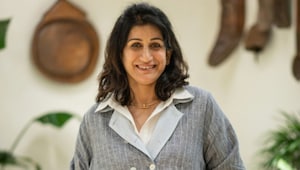Knowing Savitribai Phule, India’s First Female Teacher and One of the Country’s Modern Feminists
She fought against social evils like child marriage, sati, and caste discrimination.

Born on January 3rd, 1831, at Naigaon, Savitribai Phule was the first female teacher of India. She was also an Indian social reformer, educationalist, and poet. At the age of 9, she was married to Jyotirao Phule. Along with her husband, she fought for women’s rights in India under the British rule. In fact, the couple founded the first Indian run girls’ school in Pune, Bhide wada in 1848.
At a time when we’re discussing women’s rights and feminism, there are many things that we can learn from the life and times of Savitribai Phule. Here are a few of them.
- Savitribai hailed from the Mali community, now an Other Backward Caste (OBC), and the dominant Brahmin class didn’t allow her to avail an education. Her husband was forced to abandon his studies too, however, on the persistence of the Persian scholar Ghaffar Baig Munshi and a British official, Lizit Sahab, Jyotirao enrolled himself in a Scottish missionary school. He taught Savitribai at home and she went on to undertake a teacher’s training course at an institute run by an American missionary, Cynthia Farrar, in Ahmednagar. Eventually, the husband-wife duo opened the country’s first school for women and Savitribai is still regarded as the first female teacher of India, all thanks to her desire to educate herself despite oppression from upper classes.
- While Brahim teachers focused on Brahmanical texts like Vedas and Shastras, Savitraibai taught mathematics, science, and social studies to her students. In order to encourage children from attending school, she would offer stipends to children.
- Hailed as one of India’s modern feminists, she fought against social evils like child marriage, sati, and caste discrimination. In fact, she set up a well for untouchables at her house and also talked about the evils of the caste system in her poetry.
- Savitribai was also quite compassionate about the condition of pregnant rape victims. Together with her husband, she opened Balhatya Pratibandhak Griha: a care centre that looked after the welfare of women who were abandoned by their families. In 1852, she started Mahila Seva Mandal to raise awareness, and fight for, women’s rights. She would also initiate women’s gatherings where women from different walks of life sat together and discussed their issues.

- At the time, widows were subjected to humiliation and their heads were often shaved off and they were forced to live the life of a recluse. Savitribai organised protest marches to dissuade barbers from carrying on with this norm. Since Brahmin widows were often abandoned by their families or subjected to sati, Savitribai started the Home for the Prevention of Infanticide within the premises of her house where women could deliver their babies and leave them there if they weren’t capable of taking care of them. That’s how she adopted her son, Yashwant, who was born at her shelter.
- Apart from these, Savitribai also encouraged inter-caste marriages and founded the Satyashodhak Samaj, which organised marriages without a priest and dowry.
Mainstream feminism often forgets acknowledging women like Savitribai Phule who laid the foundation for intersectional feminism: a growing need of the hour. However, no discussion on feminism is complete without realising the groundbreaking work done by women like Savitribai.
more from Life

If you’re celebrating this season, you’ll want to do it at Shangri-La Eros New Delhi

What does it mean to be queer after 'Heated Rivalry' ended?

Scents that make staying in feel like a winter wonderland

'Bridgerton' season 4 trailer: Benedict and Sophie are ready to serve a Cinderella-esque romance

How training for a marathon became the most honest conversation I have ever had with myself

Bows are back and they’re not playing cute anymore

Eight slightly unhinged New Year rituals that the internet swears will fix your life

Ayushmann Khurrana reflects on navigating Bollywood, being embraced as an outsider, and the layered realities of fame

Your guide to all the cute accessories for elevating every party look!

9 surprising foods to avoid if you want better sleep: from tomatoes to soy sauce
